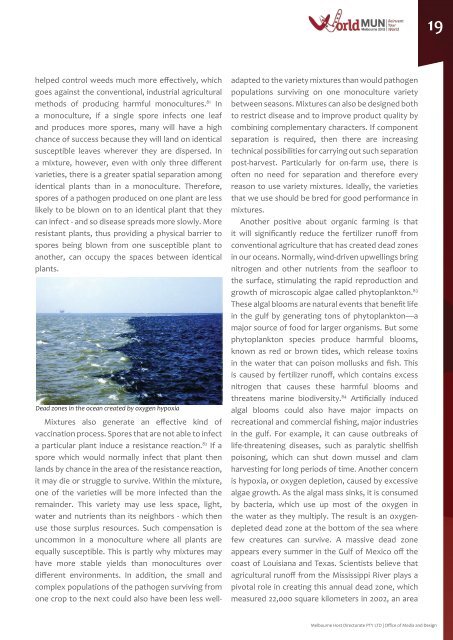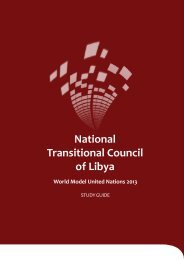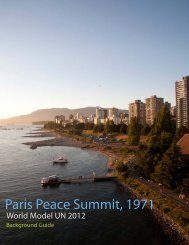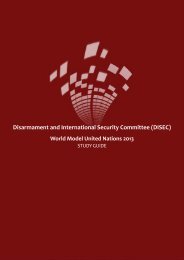UNEP Study Guide - World Model United Nations
UNEP Study Guide - World Model United Nations
UNEP Study Guide - World Model United Nations
You also want an ePaper? Increase the reach of your titles
YUMPU automatically turns print PDFs into web optimized ePapers that Google loves.
methods of producing harmful monocultures. 81 In<br />
a monoculture, if a single spore infects one leaf<br />
<br />
<br />
<br />
<br />
<br />
identical plants than in a monoculture. Therefore,<br />
spores of a pathogen produced on one plant are less<br />
<br />
can infect - and so disease spreads more slowly. More<br />
<br />
<br />
<br />
plants.<br />
<br />
<br />
<br />
a particular plant induce a resistance reaction. 82 If a<br />
spore which would normally infect that plant then<br />
<br />
<br />
<br />
<br />
<br />
use those surplus resources. Such compensation is<br />
uncommon in a monoculture where all plants are<br />
<br />
<br />
<br />
<br />
<br />
<br />
<br />
<br />
<br />
<br />
<br />
<br />
<br />
<br />
<br />
<br />
mixtures.<br />
<br />
<br />
<br />
<br />
<br />
the surface, stimulating the rapid reproduction and<br />
83<br />
<br />
<br />
major source of food for larger organisms. But some<br />
<br />
<br />
<br />
<br />
<br />
84 <br />
<br />
<br />
<br />
<br />
poisoning, which can shut down mussel and clam<br />
<br />
<br />
<br />
<br />
the water as they multiply. The result is an oxygen-<br />
<br />
<br />
<br />
<br />
<br />
<br />
<br />
19
















